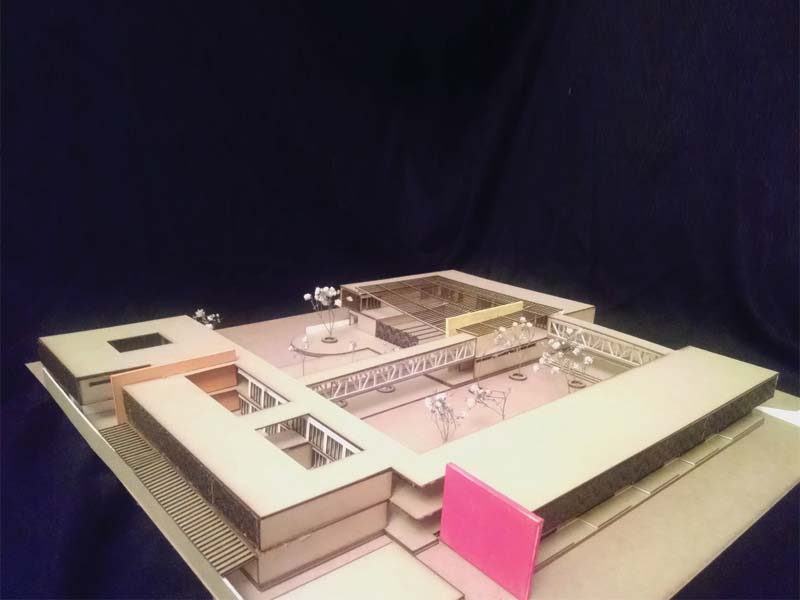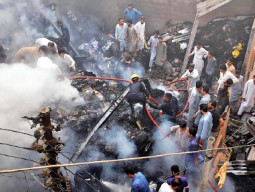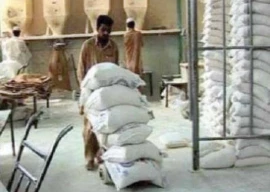
There are few localities in Karachi that evoke such a diversity of emotions as Lyari. Where there is crime, there are innovative citizen enterprises aimed at community uplift. While Lyari lags behind other locales in terms of infrastructure and services, it keeps producing sportsmen of both national and international significance. So where there are tears, there are smiles, where there is grief, there is hope.
While Sana Hameed, a final-year architecture student at NED University, was toying around with ideas for her final year thesis, she got an opportunity to participate in some peace-building workshops being organised in Lyari and Sultanabad. She was impressed by the skills and potential of the youth in Lyari but also troubled by the lack of spaces and forums that could help in incubating these talents. She then decided to explore whether architecture could provide an answer and thus was formed the conceptual framework of her thesis.
Be prepared: 50 Lyari girls head to Islamabad for scouts training
Designing a space that could serve as a repository for the multitude of talents to be found in Lyari's youth — a space that could not just incubate and fine-tune these talents but could contribute to improving the socio-economic conditions in the area by churning out youth capable of setting up their own entrepreneurial businesses and also finding viable employment options. Her inspiration came from the urban renewal process carried out in Medellin, Columbia, long considered the most violent city in the world. There, a three-tier renewal plan was implemented, starting by reviving cultural and educational activities, to reclaiming public and then dwelling spaces.

Hameed then worked with three integrated functional aspects for the space - a centre for learning, retail and a public space. The site she chose was an existing structure, developed to serve as a vocational training institute by the city government that had been abandoned until it was utilised for a project of the ‘I AM KARACHI’ programme that had set up some filming studios with basic furnishings. She started off by doing an in-depth research on the historical development of Lyari and flagged the critical political, social, cultural watersheds to better understand the nature of the present challenges. She then engaged with the youth of the area to ascertain what they would like the space to offer to them and received an enthusiastic response.
Removing the fear from Lyari, one brushstroke at a time
Thus was jotted down a list of interventions that could be housed in the space. There was a demand for training in performing arts. The people in Lyari find an association with Sufi traditions of Islam and have a fondness for music and spirituality. The youth informed her that they only get a chance to test their skills when something happens at NAPA but would like to be better trained and have locally-based opportunities also. So training in dance, music and theatre was selected, as was painting and sculpting.
To make their skills more market oriented, an additional space was created for screen-printing training and graphic designing. Space for skills enhancement in handicrafts, in particular weaving and stitching and also ceramics, was added for girls as a market was indicated for starting home-based enterprises. Based on the Lincolns Corner model, a library space has also been designed that acts as an interactive venue for hosting, seminars, conferences and where local youth are connected via digital tools to the outside world to add to their global exposure.

A retail space was designed to cater to the display and sale of products by local residents. Then once the academic activities were over, in the evenings, a provision was made to make parts of the space accessible for the local communities to enjoy as a public space. The management model selected to operate the space is a public private partnership model, where the city government enters into a management contract with some NGO or private operator within the framework of the Adopt a School scheme.
So a model plan is ready for a space acting as an incubator for positive change in Lyari, anyone interested?
The writer is an urban planner and runs a non-profit organisation based in Karachi city focusing on urban sustainability issues. He can be reached at fanwar@sustainableinitiatives.org.pk
Published in The Express Tribune, December 7th, 2015.























1713418975-0/MehwishKhans-(1)1713418975-0-270x192.webp)

















COMMENTS
Comments are moderated and generally will be posted if they are on-topic and not abusive.
For more information, please see our Comments FAQ